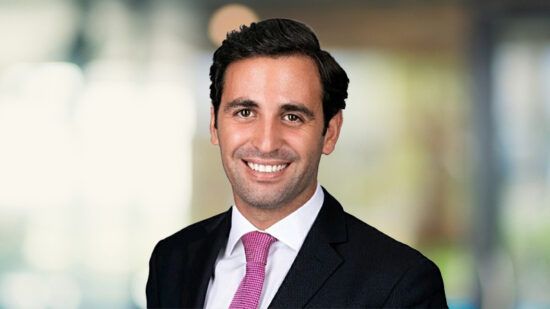Investor risk profiling is at the heart of private wealth management. In theory, without proper knowledge of the investor’s goals, time horizon, liquidity needs, and risk aversion, it is impossible to recommend suitable investments or build efficient longterm investment strategies for that investor.
Even worse, if an adviser is not aware of the investor’s risk profile, chances are the investor will buy products that help the adviser sleep well at night rather than the other way around.
To help ensure that consumers are sold only products that are suitable for them, every major developed financial market has instituted suitability rules. In the European Union, Article 25 of the Markets in Financial Instruments Directive II (MiFID II) provides guidance on suitability; in the United States, Rule 2111 of the Financial Industry Regulatory Authority (FINRA) deals with this issue.
Despite the central role of risk profiling in current investor-servicing processes, what constitutes an adequate, accurate risk profile-and a suitable investment based on it-remains an open question. Practitioners, regulators, and academics agree that suitability depends primarily on the characteristics of the investor, not the product itself (Davies and Brooks 2014).
Typically, practitioners and regulators use “risk profile” as a blanket term to describe the various facts and investor traits that need to be taken into account to identify suitable investments for an investor. Of course, the devil is in the details, because exactly which facts and traits determine the risk profile of an investor is a matter of opinion, and current research does not give a definitive answer. Moreover, findings from behavioral research fundamentally challenge some of the assumptions that current practice and suitability regulations are based on.
What Is a Risk Profile?
Apple founder Steve Jobs, when asked in a mid-career interview about the reasons for his success, presciently answered that almost no one in business really asks why things are done the way that they are (Gau, Segaller, and Sen 2012). In this vein, this discussion begins with two fundamental questions. First, what is an investor risk profile currently understood to be? Second, what are the most common risk-profiling techniques used by practitioners?
Traditional finance uses the concepts of classical decision making, modern portfolio theory, and the capital asset pricing model (CAPM) to define the risk profile of an investor. In this model, investors are inherently risk averse and take on additional risk only if they judge that higher anticipated returns will compensate them for it. One of the fundamental results of modern portfolio theory is that, under the assumptions of the CAPM (Sharpe 1964), all investors invest in a combination of the risk-free asset and the market portfolio. The allocation of funds between the risk-free asset and the risky market portfolio is determined only by the risk aversion of the investor. Thus, in the world described by this traditional model, the investor’s risk profile is given by the risk aversion factor in the utility function of the investor. In reality, investors face constraints and do not act according to the model of rationality used in traditional finance (see, for example, Kahnemann 2012).
A useful approach to dealing with these practical challenges is to distinguish between risk capacity and risk aversion. Risk capacity applies to the objective ability of an investor to take on financial risk. Capacity depends on objective economic circumstances, such as the investor’s investment horizon, liquidity needs, income, and wealth, as well as tax rates and other factors. The primary distinguishing feature of risk capacity is that it is relatively immune to psychological distortion or subjective perception.
Risk aversion, however, may be understood as the combination of psychological traits and emotional responses that determine the investor’s willingness to take on financial risk and the degree of psychological or emotional pain the investor experiences when faced with financial loss. These emotional factors are often even more important for practitioners to understand than the objective economic circumstances of the investor; yet, they are harder to measure.
Behavioral finance research has uncovered many systematic departures in investor decision making from the ideal of rationality used in traditional finance. For example, investors tend to exhibit loss aversion, insofar as the gain in utility from an increase in wealth is smaller in absolute value than the loss in utility from an equally large decrease in wealth. Although these systematic deviations from rational behavior have been widely documented, the challenge for practitioners is to identify to what degree a given investor deviates from idealized rational behavior, when the person does so, and-perhaps most consequentially-whether the practitioner can assist the investor toward optimal investment outcomes.
The combination of risk capacity and risk aversion constitutes what the finance industry calls the investor “risk profile.” Investments are deemed suitable for the investor only if the investments’ risks fall within the limits of the individual’s risk capacity and risk aversion. Unfortunately, we as yet have no generally accepted list of objective economic circumstances that define risk capacity and even less, a list of psychological traits that define risk aversion.
Nevertheless, regulators require investment firms to establish investor risk profiles before recommending any financial products or investments for those investors. The rationale is that the “buyer beware” philosophy has hurt too many investors in the past. The prevailing regulatory desire is to put at least minimal investor protections in place. Current regulations reflect the complexity surrounding risk profiling, with many generally vague as to what factors influence a risk profile.
Current regulatory guidance also differs among countries. Article 25 of the MiFID II states: “When providing investment advice or portfolio management, the investment firm shall obtain the necessary information regarding the client’s knowledge and experience in the investment field relevant to the specific type of product, that person’s financial situation including his ability to bear losses, and his investment objectives including his risk tolerance.”
In the United States, FINRA Rule 2111 states: “A customer’s investment profile includes, but is not limited to, the customer’s age, other investments, financial situation and needs, tax status, investment objectives, investment experience, investment time horizon, liquidity needs, risk tolerance, and any other information the customer may disclose to the member or associated person in connection with such recommendation.”
Risk tolerance features prominently in both regulations, but neither one says how to measure it or how it influences the range of suitable investments. The list of financial circumstances influencing the investor’s risk profile is lengthy in the case of the FINRA regulation but not defined at all in the European regulation. The European regulation requires assessment of the experience and knowledge of the investor in the relevant investment field, whereas US regulations demand only an assessment of the general investment experience of the investor. It is fair to say that the lack of clear, consistent guidance by regulators leaves practitioners hanging in midair. They must ensure compliance yet lack clarity on what constitutes compliance. They also do not know what kind of risk profiling actually leads to investor protection and acceptable outcomes for the practitioner. The result is a myriad of approaches to risk profiling and little evidence that these techniques meet any of their intended functions.
Current Practice
The typical investor risk-profiling process is shown in Figure 1. The task usually begins with definition and discussion of the investor’s situation and the goal(s) that are to be achieved by the investments or portfolio.

Serious issues arise at this point: Investors may have multiple goals, they may never have considered or articulated their objectives in this way, and they are not necessarily able to capture goals in terms of quantity or time. A common multiple-goal situation is posed by an investor who wants to save for retirement, which she expects in 10 years, while also wanting to save for a down payment on a new house.
To complicate the situation further, she may also want to put aside a pool of liquid assets (emergency funds) that enable her to sleep well at night. What financial investment will achieve this last goal may be hard to define. If we assume for the moment that the goals of the investor can be adequately defined, the process moves to filling out a questionnaire intended to quantify and document the risk aversion and risk capacity of the investor. At this stage, problems mushroom: In theory, to provide meaningful and reliable results, questionnaires need to be properly validated and tested. Validation and testing, however, are apparently seldom done.
Rice (2005) analyzed 131 questionnaires from investment firms and advisers in the United States, and his findings are troubling, to say the least. The number of questions used in the questionnaires ranged from 1 to 49. Probably the most troublesome finding is that 11% of the questionnaires he analyzed explicitly asked the investor to select a specific risk profile or portfolio. One has to wonder what use a questionnaire is if it asks the investor to provide the result of the risk-profiling analysis.
Even for more sophisticated questionnaires, however, the design is hardly robust. Although 65% of questionnaires had at least one question about the investor’s time horizon, 35% did not ask about the time horizon at all. Some 70% of questionnaires asked about the investor’s anticipated behavior in various market circumstances, but the treatment was superficial and never related to the investor’s own financial situation. Yet, putting a scenario into a context relevant for the individual investor is important; a financial loss of $10,000 might be devastating to a student but not relevant to a millionaire. To truly assess the emotional reaction that a financial loss might trigger, the size of the loss has to be meaningful to the investor, and to evoke an emotional response, it has to be made relevant. The influence of framing on the outcome of financial decisions has long been established (Tversky and Kahnemann 1981).
Thus, hypothetical scenarios in questionnaires should be framed in meaningful ways for an individual investor-something that is hard to accomplish in paper-based questionnaires. To demonstrate the impact of framing on the outcome of risk-profiling questionnaires, I recruited 489 individuals through Amazon’s MTurk service. Each individual was randomly assigned to one of three simple risk questionnaires for which they had to answer a few personal questions-age, gender, income, and education-as well as four scenario questions of the following form:
● Version 1: Assume you invest half your savings in stock A. After one month, the investment has declined by 10%. What do you do? Buy some more, do nothing, or sell?
● Version 2: Assume you invest $100 into stock A. After one month, the investment has declined by $10. What do you do? Buy some more, do nothing, or sell?
● Version 3: Assume you invest $10 million into stock A. After one month, the investment has declined by $1 million. What do you do? Buy some more, do nothing, or sell?

Questions were asked for a decline of 10%, 30%, and 50% as well as an increase of 10% in the stock price. Figure 2 shows the percentage of respondents who chose to sell their stock holdings depending on the amount lost or gained. The differences between the three versions of the questionnaire are statistically significant. In a more thorough analysis, I estimated ordered logistic regressions to assess whether the decision to sell stocks or buy some more was indeed triggered by the different frames of epresentation. When differences in age, gender, income, and education of the respondents were taken into account, the $1 million frame (Version 3 in the experiment) led to a significant increase in the propensity to sell and a decrease in the propensity to buy some more. The differences between the $100 frame (Version 2) and the percentage frame (Version 1) became no longer statistically significant when the differences in age, income, and so on, of the respondents were taken into account. For all the respondents in the experiment, a loss or gain of $1 million was a vast sum of money whereas $100 was typically a small amount.
When dealing with large stakes-even if it is just on paper-the emotional reaction to losses is bigger than when dealing with small sums or abstract sums, such as percentage losses. This increased emotional reaction increases loss aversion. The percentage of respondents choosing to sell in the $1 million frame is typically about one third higher than in the percentage frame. Unfortunately, the questionnaires analyzed by Rice (2005) all framed scenarios in terms of percentages or small money amounts. The current practice of risk questionnaires is thus likely underestimating the risk aversion of investors.
When faced with a generic paper questionnaire, we might all be risk-loving investors, but when the next financial crisis hits, actual behavior might be very different from what we said we would do when answering a questionnaire. Once the questionnaire has been completed by the investor, the answers are then typically scored by the adviser/investment firm and matched with a specific asset allocation. In his survey of business practices, Rice (2005) found that scoring and mapping are done in highly subjective ways. Scoring was generally done on an equal-weight basis, even though some questions might have been clearly more important in determining the risk profile than others. Similarly, the confidence an investor had in specific answers was ignored in every instance, even though the abstract nature of the questions might lead to large variations in confidence levels. Finally, the determination of the resulting asset allocation seems to be typically done in such a way as to benefit the investment firm rather than the investor.
When all questions in the questionnaires surveyed by Rice (2005) were answered in the most conservative way, the allocation to equities ranged from 0% to 70%. The influence of the adviser is greater than most investors (or regulators, for that matter) realize, as shown by Foerster, Linnainmaa, Melzer, and Previtero (2014) in an analysis of more than 180,000 Canadian brokerage accounts. They found that standard regressions that took into account risk tolerance (as indicated by answers to simple hypothetical questions), investor time horizon, financial knowledge, income, net worth, age, gender, and occupation could explain only 13.1% of the variation in the share of risky assets in investor portfolios. When the influence of the adviser was taken into account, the share of variation in risky assets that could be explained rose to 31.6%. In other words, the adviser turned out to be a more influential factor in the makeup of investor portfolios than the factors typically evaluated in a risk-profiling questionnaire. Similar results were obtained for the home bias in investor portfolios.
In summary, increasing evidence indicates that the current practice of using questionnaires to determine investor risk profiles is of limited reliability. The variation in risky assets in investor portfolios explained by variables such as age, gender, time horizon, and risk aversion is in the range of 5% to 15%, leaving the majority of the variation unexplained.
It is surprising that this lack of reliability has not attracted more attention by academics, regulators, or practitioners. But-to paraphrase Benny Hill-just because nobody complains doesn’t mean that all parachutes are reliable. The number of complaints about the sale of unsuitable investments filed with the ombudsmen in Europe or the United States is staggering. The UK Financial Ombudsman Service recorded 2,079 complaints in relation to stock broking and portfolio management, with suitability questions being the main cause of problems (Financial Ombudsman Service 2014). The office of the Ombudsman at FINRA counted 1,283 complaints about allegedly unsuitable investments between January 2014 and November 2014 (FINRA 2014).
To be sure, the number of complaints is down from the years after the 2007-08 financial crisis, when complaints in the United Kingdom hit 2,474 and in the United States, hit an all-time high of 2,473 (FINRA 2011). Evidently, as long as the investments make money for the investors, suitability issues are not noticed or ignore. Once markets start to shake, the fragile foundations of investment advice as practiced today start to give way.
Recent Findings about True Influences on Investor Portfolios
If the questions in the widely usedapproach of questionnaires do not explain the majority of variation in risky assets between investor portfolios, what factors do explain these differences? And can we use these factors to build more accurate risk profiles than questionnaires provide? A growing body of research shows that the biggest impact on our risk preferences comes from our experiences and the environment we interact with (e.g., Klement and Miranda 2012). Basically, the factors influencing investor risk profiles can be placed in three categories:
1. Our genetic predisposition to take on financial risks.
2. The people we interact with and their influence on our views.
3. The circumstances we experience in our lifetimes-in particular, during the period psychologists call the formative years.
The risks we are genetically predisposed to take include financial risk. Although this fact is unsurprising, the degree of influence exerted by nature may be surprising. In a study of more than 37,000 identical and fraternal twins in Sweden, Barnea, Cronqvist, and Siegel (2010) investigated the pair’s participation rate in stock markets and the shares of risky assets in the portfolios of the individual investors. (Sweden provides fertile hunting ground for research on the heritability of personal traits because the Swedish Twin Registry provides comprehensive data on all twins born in Sweden since 1886. In particular, the registry provides data on the rare cases when identical twins were adopted by two different sets of parents and reared in different environments.)
Comparing the portfolio choices of identical twins and fraternal twins raised in the same household and comparing the portfolio choices of twins reared apart allowed the researchers to differentiate between environmental and genetic influences on risk preferences. Because Sweden also collects a lot of data on the individual portfolios of citizens for tax purposes, the researchers could combine the Swedish Twin Registry data with portfolio data from the Swedish Tax Agency to carry out a useful analysis of the risk preferences of a large pool of individual investors. Barnea et al. (2010) showed that 20%-40% of the variation in equities in investor portfolios could be explained by the individual’s genetic predisposition to take on financial risk.
Similar results were found by an independent study of the pension fund investments of Swedish citizens by Cesarini, Johannesson, Lichtenstein, Sandewall, and Wallace (2010). Moreover, research has identified genomes that are linked to financial risk taking (Dreber, Apicella, Eisenberg, Garcia, and Zamore 2009; Kuhnen and Chiao 2009). Identifying a genetic predisposition to take financial risk is difficult for practitioners-even more so would be taking saliva samples to advise investors based on DNA. Practitioners may have some indirect ways, however, to examine the genetic predisposition to take or avoid risks, as discussed below. Even if 20%-40% of the amount of financial risk investors take can be explained by genetic traits, the majority of variation is still unexplained. Here, the influences of our environment and the people we interact with come into play.
As previously mentioned, the study by Foerster et al. (2014) showed that advisers have a bigger impact on the portfolios of investors than do measured risk aversion, age, income, and other variables. In addition, Hong, Kubik, and Stein (2004) found that the community we live in or the church we attend plays a similarly important role. Another study confirmed the community effect; moving into a community with 10 percentage points higher stock market participation increases an individual’s probability of stock ownership by about 4 percentage points (Brown, Ivkovic, Smith, and Weisbenner 2007). Social interactions may also be at the heart of the cultural differences found in some studies. In a study of investors in 45 countries,Wang, Rieger, and Hens (2011) showed that the propensity to invest over time horizons of one month to one year differ significantly from country to country.
People living in countries that are less politically stable or that have a lower level of social cohesion, such as Russia, Romania, and Greece, generally showed a lower tendency to invest for the long term and a higher preference for quick gains. At the other end of the spectrum are citizens of Germany, Switzerland, and the Scandinavian countries, who showed a high propensity to invest for the long term. Such cultural differences may have many origins and correlate with many variables, but their influence is important and warrants study at a later time.
Finally, life experiences are an important-if not the most important- contributor to financial risk preferences. In a groundbreaking study, Malmendier and Nagel (2011) showed that individuals who experienced the Great Depression during their early childhood displayed significantly different investment behavior from those who did not-even as many as 40 years later. Individuals who experienced the Great Depression were less likely to invest in the stock market and held, on average, a lower allocation to stocks than individuals who were born and raised in the relatively benign world after World War II. A study by Ehrmann and Tzamourani (2011) showed that the high-inflation period of the 1970s also had a lasting impact on investors. Even 10 years after that inflation ended, investors who actively experienced the period were more concerned about inflation than younger investors who had not experienced that time.
A particularly important time for the formation of risk preferences is the period between ages 16 and 25. In this period, most individuals form their beliefs about the world, society, and life in general (Giuliano and Spilimbergo 2009). This period often coincides with, or just precedes, many people’s first forays into investments. Thus, the experiences of individuals during this crucial time period influence their investment beliefs and their risk profiles for a long time. Giuliano and Spilimbergo showed that individuals who experienced at least one recession during their formative years exhibited political and economic views later in life that were different from those who did not. For example, these individuals were more prone to believe in the necessity of government intervention to redistribute wealth from the haves to the have-nots. Massa and Simonov (2011) investigated the interaction between financial risk taking and formative years’ experiences directly by examining the investment portfolios of individuals during their university years. They found that when and where individuals attended college was highly influential on the portfolios they invested in.
The 2007-08 financial crisis provided researchers ample opportunity to study financial risk taking in real time. Emotions ran high during the crisis, and investors -and many advisers- experienced a disproportionate amount of stress. Thus, the financial crisis allowed researchers to investigate whether risk profiles are stable over time or whether, and if so, how, they are influenced by adverse market events. These studies found that risk profiles may well consist of a component that is stable over time and describes our general propensity to take on risk but also a variable component that is influenced by our emotions.
The “risk as feelings” effect (Loewenstein, Weber, Hsee, and Welch 2001) predicts that individuals make quick decisions about risks that are guided primarily by their emotions or intuition rather than rational considerations. Burns, Peters, and Slovic (2012) and Weber, Weber, and Nosic (2013) supported this hypothesis. Both studies used questionnaires to identify risk preferences and actual investment behavior throughout the financial crisis. The stable component of a risk profile seems to be the individual’s assessment of his or her risk aversion; that is, the individual remains similarly risk averse throughout a stressful financial episode.
What changes is the perception of riskiness. Once a decline has started, stock markets are perceived as riskier than they were, and only once they recover does the perception of riskiness decline. Thus, after a market downturn, investors are less willing to invest in stock markets than after a recovery or a prolonged bull market. How these perceptions of risk change over time and how the changing perceptions dynamically influence the risk profile demands further investigation at a later date.
Practical Guidelines for Practitioners
Practitioners need to be aware of these research findings, but perhaps more crucial is that they be able to identify the combination of traits and biases in each individual. Using generalizations based on the research cited here is not going to be helpful. It could, if a generalization may be allowed here, do more harm than good. Psychometric testing is both an art and a science (which should be explored at a later time), but practitioners can use some simple techniques to identify individual traits more reliably than by using standardized questionnaires.
Financial Anamnesis. Doctors know that certain forms of cancer and other diseases have a significant genetic component. To identify patients who are at risk of contracting such diseases, they perform an anamnesis of the patient by asking for the medical history of not only the patient but also parents, siblings, and other relatives. Practitioners can engage in financial anamnesis to identify a systematic bias for or against financial risk taking by asking about the investment behavior of relatives. For example, studies show that children of entrepreneurs are more likely to become entrepreneurs themselves (e.g., Heaton and Lucas 2000).
Similarly, stock market participation and other parental attitudes about the riskiness of stocks seem to correlate with attitudes of their children (Charles and Hurst 2003). So, asking about the financial habits of relatives can shed light on the risk profile of an individual. Investment Diaries. Of course, nothing conveys the truth more than the actual investment behavior of an investor. What an investor chooses to invest in and how the investor decides to buy or sell is more informative of risk attitudes than a questionnaire can be. Thus, advisers should investigate the past investment history of an individual. The ideal instrument to do this is an investment diary in which an investor records, in real time, transactions made and the reasons for the transactions. Over time, this investment diary paints a picture of the individual risk-taking traits of the investor. Few investors, however, systematically record their decisions in a diary, and few advisers encourage their clients to do so. In the absence of a diary, a collection of past transactions gleaned from bank statements can be informative. If the investor is willing to disclose past transactions and decisions to the adviser, these facts can paint a colorful and accurate investor risk profile. The danger of this method is that individual investors can learn from past mistakes and thus their attitudes toward risk may have changed over time.
Investment History by Market Environment. Finally, advisers can shed light on the risk profile of investors by putting their investment history into the context of the markets. As discussed, the markets in an investor’s formative years can leave a lasting imprint on the investor’s risk profile. Investors who spent their formative years in the 1970s are likely to be more averse to bond investments and more prone to seek inflation protection than investors who spent their formative years in the 1990s. If an individual’s first stock investments were made in the early 1980s or during the first decade of this century, the individual’s attitude toward stocks might be very different from the attitude of someone who made his first investments during the bull market of the 1990s or in the last five years. Most investors today have never experienced a period of steadily rising interest rates and the impact of such a regime on investments. In short, the financial history of an investor might show the adviser where the investor might be overly sensitive to some risks or blind to some risks.
All of these tools-financial anamnesis, investment diaries, and investment histories-should prove useful to advisers in their regular interactions with clients. Ideally, the results of the discussions would be documented, and with the help of these and other tools, the adviser can generate more reliable risk profiles in the future. We are only at the beginning of the development of such tools; unfortunately, the topic of how risk profiling can be improved in the future must wait for a later time.
Summary and Outlook
Risk profiling forms the foundation of financial advice to investors all around the globe. Yet, the current practice of risk profiling via generic questionnaires provides a weak foundation for risk profiles. The questionnaires used at the moment are often not empirically validated and have little explanatory power. Regulators are increasingly aware of this problem and are requiring better tools. In its “Technical Advice to the Commission on MiFID II and MiFIR,” the European Securities and Markets Authority states, Investment firms shall take reasonable steps to ensure that the information collected about their clients is reliable. This includes but is not limited to . . . undertaking valid and reliable assessments of their client’s knowledge and experience and risk they are willing to take . . . and ensuring all tools employed in the suitability assessment process are appropriately designed for use with their clients and are fit-for-purpose. (ESMA 2014)
The crucial phrase in these sentences is “valid and reliable.” Current practice does not conform to these standards. These recommendations are not binding, but the report of ESMA was based on a thorough vetting process with stakeholders from the financial industry. Moreover, these recommendations can be expected to be enacted into law within a few years. So, it is probably just a matter of time before advisers and investment firms in the European Union will have to comply with these standards. From the viewpoint of the end investor, such high standards can only be considered desirable, because they may reduce the risk of investments in unsuitable products.
Investment firms, for their part, could use these increased compliance demands to their advantage. By designing “valid and reliable” tools, firms can increase the trust their clients place in them and positively differentiate themselves from their competitors. By being an early adopter, an investment firm can demonstrate a clear understanding of why certain investment strategies or products may or may not be right for a particular client. The firm can thus use such tools to enhance the client’s experience with the firm. In addition, most investors do not like to fill out generic questionnaires, but few investors do not like to tell their story and talk about their past investment experiences. So, why bother with questionnaires? Of course part of the answer is that there will always be a need to document facts and data gathered from investors, but with the ideas presented here, hopefully investment firms and advisers can build a better foundation for their advice.
Copyright 2015, CFA Institute Research Foundation. Reproduced and republished with permission from the CFA Institute Research Foundation. All rights reserved.







